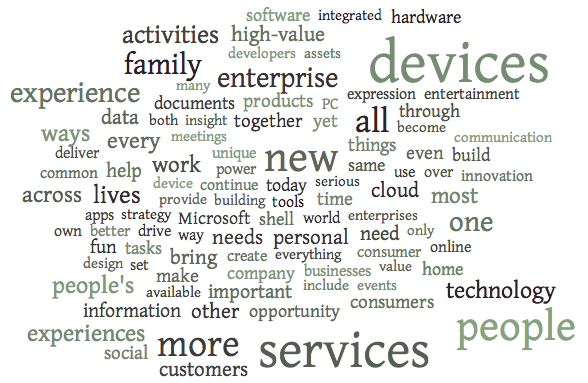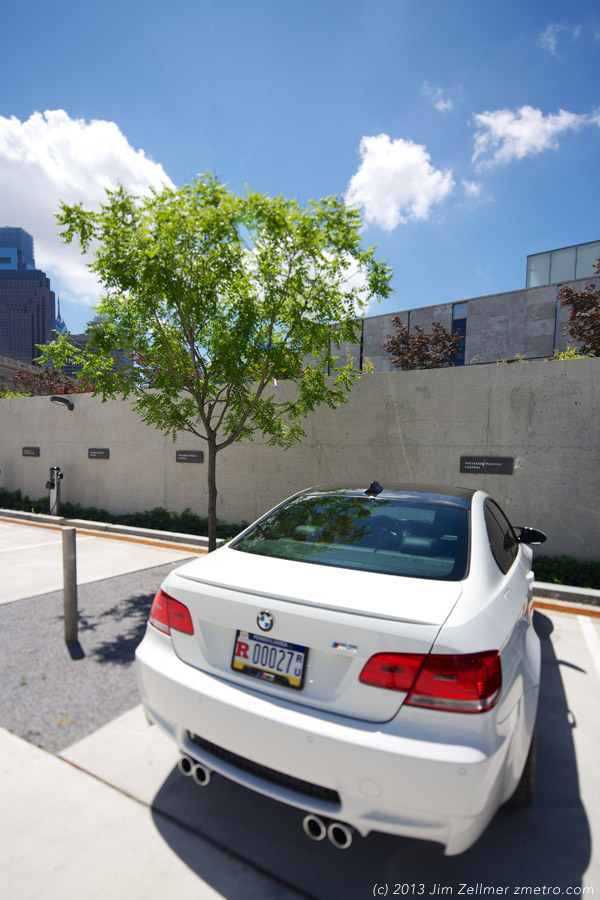
The Microsoft memorandum can be found here.
Ben Thompson: Why Microsoft’s Reorganization is a Bad Idea and Why Microsoft’s reorganization closes the books on an era of computing.
Snowden Backlash: US Media Get Personal
There’s another reason for the united media front: The Guardian is becoming a competitive threat for American media outlets. The first Snowden video interview received almost seven million clicks on the newspaper’s US website. “They set the US news agenda today,” Associated Press star reporter Matt Apuzzo tweeted enviously.
Why? Janine Gibson, the Guardian’s American chief, told the Huffington Post that their competition has a “lack of skepticism on a whole” when it comes to national security. Critical scrutiny, she said, has been considered “unpatriotic” since 9/11.
The greatest humiliation would be if the British usurper won a Pulitzer Prize. Only American media can apply for it, but the Prize committee accepted one submission by the Guardian last year. Its reasoning? The newspaper has an “unmistakable presence” in the United States.
Preferred Parking: Carpool M3

Journalism Is in a Disastrous State — But for a Handful of Millionaire Pundits, It’s a Wonderful Life
Mainstream journalism is, we’re often told, in a state of severe crisis. Newsroom employment began to decline as a result of corporate takeovers in the 1990s. Then the digital revolution destroyed the advertising market, plunging the industry into serious doubt about its very business model.
But times aren’t rough all around. There are many pundits and TV anchors who are doing very well in the media world, racking up millions of dollars from their media contracts, book deals and lucrative speaking fees. Though they don’t generally approach the compensation packages awarded to network morning show hosts like Matt Lauer or evening anchors like Diane Sawyer, they’re not exactly hurting.
Of course, being the boss means the biggest payday—and media company CEOs have been posting unbelievable incomes. In 2012, CBS head Les Moonves made $62 million, Disney’s Robert Iger made $37 million and Rupert Murdoch ofFox took home a comparatively modest $22 million ( New York Times,5/5/13). Don’t feel sorry for Murdoch, though; as No. 91 on Forbes’ list of the world’s richest people, with an estimated net worth of $11.2 billion, he’s unlikely to go to bed hungry.
“Living People Don’t Sell a Car Like This”




Nations Buying as Hackers Sell Computer Flaws
NICOLE PERLROTH and DAVID E. SANGER:
Still, said Mr. Soghoian of the A.C.L.U., “The bounties pale in comparison to what the government pays.” The military establishment, he said, “created Frankenstein by feeding the market.”
In many ways, the United States government created the market. When the United States and Israel used a series of flaws — including one in a Windows font program — to unleash what became known as the Stuxnet worm, a sophisticated cyberweapon used to temporarily cripple Iran’s ability to enrich uranium, it showed the world what was possible. It also became a catalyst for a cyberarms race.
When the Stuxnet code leaked out of the Natanz nuclear enrichment plant in Iran in the summer of 2010, the flaws suddenly took on new value. Subsequent discoveries of sophisticated state-sponsored computer viruses named Flame and Duqu that used flaws to spy on computers in Iran have only fueled interest.
“I think it is fair to say that no one anticipated where this was going,” said one person who was involved in the early American and Israeli strategy. “And today, no one is sure where it is going to end up.”
How selfies became a global phenomenon
It starts with a certain angle: a smartphone tilted at 45 degrees just above your eyeline is generally deemed the most forgiving. Then a light source: the flattering beam of a backlit window or a bursting supernova of flash reflected in a bathroom mirror, as preparations are under way for a night out.
The pose is important. Knowing self-awareness is conveyed by the slight raise of an eyebrow, the sideways smile that says you’re not taking it too seriously. A doe-eyed stare and mussed-up hair denotes natural beauty, as if you’ve just woken up and can’t help looking like this. Sexiness is suggested by sucked-in cheeks, pouting lips, a nonchalant cock of the head and a hint of bare flesh just below the clavicle. Snap!
Afterwards, a flattering filter is applied. Outlines are blurred, colours are softened, a sepia tint soaks through to imply a simpler era of vinyl records and VW camper vans.
All of this is the work of an instant. Then, with a single tap, you are ready to upload: to Twitter, to Facebook, to Instagram, each likeness accompanied by a self-referential hashtag. Your image is retweeted and tagged and shared. Your screen fills with thumbs-up signs and heart-shaped emoticons. You are “liked” several times over. You feel a shiver of – what, exactly? Approbation? Reassurance? Existential calm? Whatever it is, it’s addictive. Soon, you repeat the whole process, trying out a different pose. Again and again, you offer yourself up for public consumption.
Special Deal: The shadowy cartel of doctors that controls Medicare.
On the last week of April earlier this year, a small committee of doctors met quietly in a midsized ballroom at the Renaissance Hotel in Chicago. There was an anesthesiologist, an ophthalmologist, a radiologist, and so on—thirty-one in all, each representing their own medical specialty society, each a heavy hitter in his or her own field.
The meeting was convened, as always, by the American Medical Association. Since 1992, the AMA has summoned this same committee three times a year. It’s called the Specialty Society Relative Value Scale Update Committee (or RUC, pronounced “ruck”), and it’s probably one of the most powerful committees in America that you’ve never heard of.
The purpose of each of these triannual RUC meetings is always the same: it’s the committee members’ job to decide what Medicare should pay them and their colleagues for the medical procedures they perform. How much should radiologists get for administering an MRI? How much should cardiologists be paid for inserting a heart stent?
While these doctors always discuss the “value” of each procedure in terms of the amount of time, work, and overhead required of them to perform it, the implication of that “value” is not lost on anyone in the room: they are, essentially, haggling over what their own salaries should be. “No one ever says the word ‘price,’ ” a doctor on the committee told me after the April meeting. “But yeah, everyone knows we’re talking about money.”
That doctor spoke to me on condition of anonymity in part because all the committee members, as well as more than a hundred or so of their advisers and consultants, are required before each meeting to sign what was described to me as a “draconian” nondisclosure agreement. They are not allowed to talk about the specifics of what is discussed, and they are not allowed to remove any of the literature handed out behind those double doors. Neither the minutes nor the surveys they use to arrive at their decisions are ever published, and the meetings, which last about five days each time, are always closed to both the public and the press. After that meeting in April, there was not so much as a single headline, not in any major newspaper, not even on the wonkiest of the TV shows, announcing that it had taken place at all.
‘United Stasi of America’ Light Artist Wanted by Berlin Police
Berlin police believe that this message, projected onto the wall of the US Embassy in Berlin on Sunday night, could be a violation of laws against insulting representatives of foreign states.
Berlin police are investigating a light artist for projecting the phrase “United Stasi of America” onto the the US Embassy in Berlin. The phrase refers to the former East German secret police and was meant as a protest against American spying. But can the artist really be prosecuted?
It was meant to be a publicity stunt — a political prank aimed at voicing displeasure over vast US Internet surveillance and spying activities. But Oliver Bienkowski, the light artist who projected the words “United Stasi of America” onto the US Embassy late Sunday night now finds himself in hot water with the Berlin police after authorities opened an investigation.
America against democracy
That would have been some real democracy-promotion, right here in the homeland. What happened? Is it naive to think Mr Obama really believed this stuff? I’ll admit, with some embarrassment, that I’d thought he did believe it. But this “commitment” has been so thoroughly forsaken one is forced to consider whether it was ever sincere. It has been so thoroughly forsaken one wonders whether to laugh or cry. What kind of message are we sending about the viability these democratic ideals—about openness, transparency, public participation, public collaboration? How hollow must American exhortations to democracy sound to foreign ears? Mr Snowden may be responsible for having exposed this hypocrisy, for having betrayed the thug omertà at the heart of America’s domestic democracy-suppression programme, but the hypocrisy is America’s. I’d very much like to know what led Mr Obama to change his mind, to conclude that America is not after all safe for democracy, though I know he’s not about to tell us. The matter is settled. It has been decided, and not by us. We can’t handle the truth.